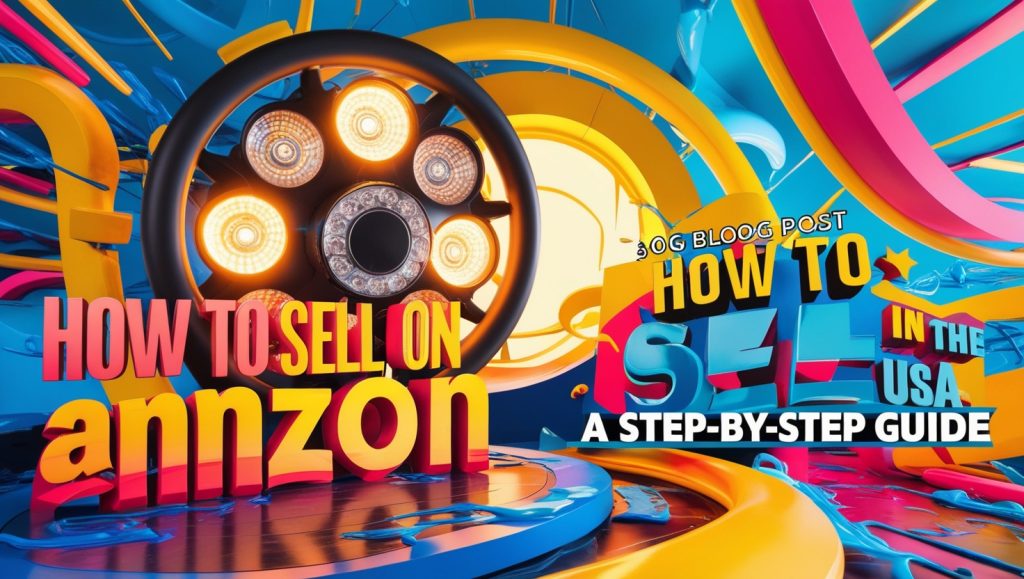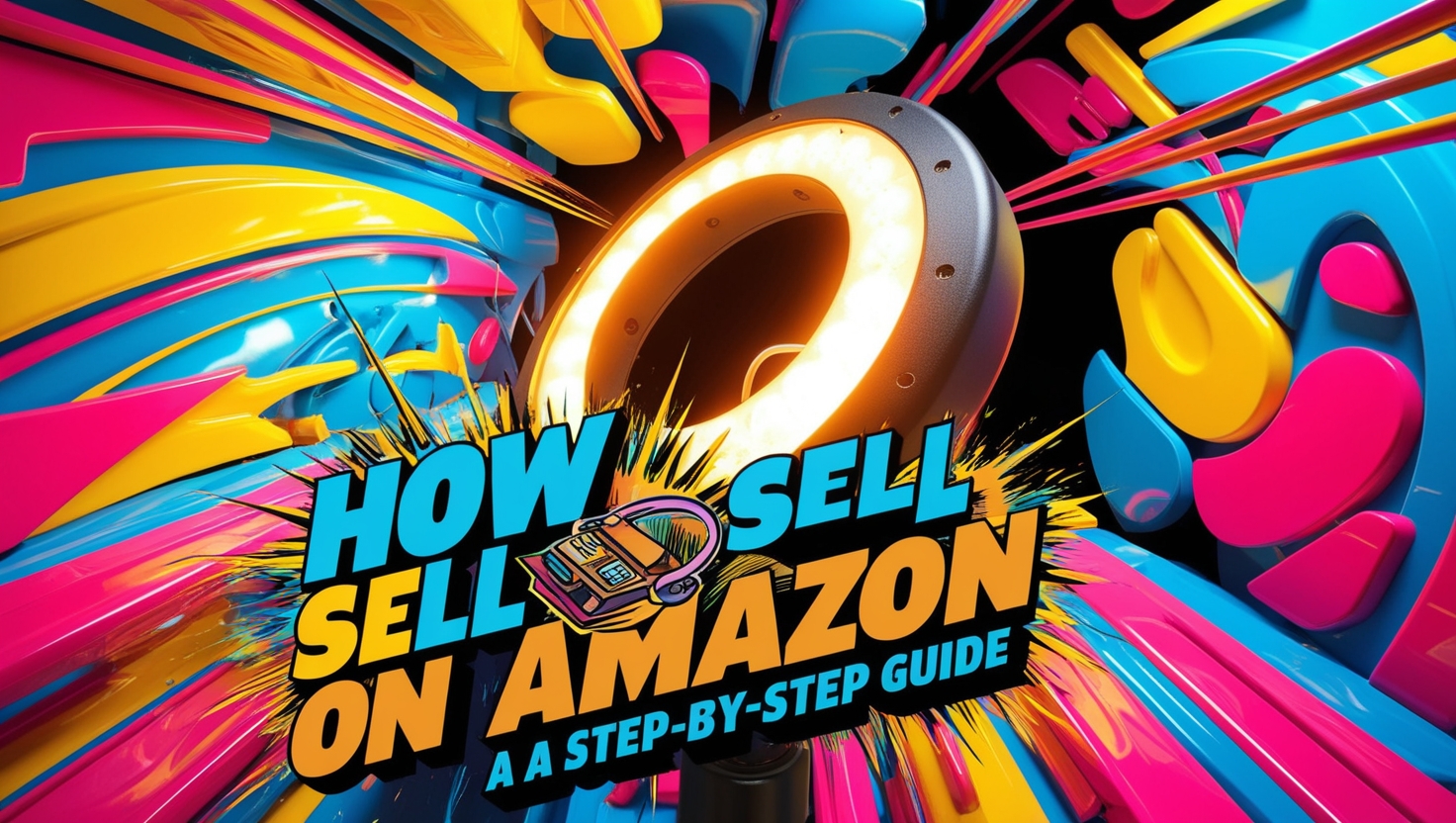How to Sell on Amazon in the USA: A Step-by-Step Guide
Step 1: Create an Amazon Seller Account
The first step in selling on Amazon is to create a seller account. There are two types of Amazon accounts:
- Individual Seller Account: If you plan to sell fewer than 40 items per month, the individual plan is ideal. It charges you $0.99 per item sold, in addition to other applicable fees.
- Professional Seller Account: For sellers who plan to sell more than 40 items per month, the professional plan costs $39.99 per month, regardless of how many items are sold.
To set up an account, visit Amazon Seller Central and provide necessary information, including:
- Legal name and address
- Contact details
- Tax information (SSN, EIN)
- Bank account for deposits
Step 2: Choose Your Selling Strategy
Amazon offers two main ways to sell products:
- Sell existing products: If your product already exists on Amazon, simply add your listing to the existing product page.
- Create a new product listing: If your product is new to the platform, you’ll need to create a new product detail page.
Before listing, ensure that your product is permitted on Amazon, as some items may be restricted.

Step 3: List Products
Now that your account is set up, you can start listing your products. Follow these steps:
- Product Category Selection: Select the category your product falls under.
- Product Title: Use a clear and optimized title. Include keywords that customers are likely to search for.
- Product Description: Provide detailed descriptions. Highlight features and benefits to convince buyers.
- Images: Upload high-quality images that comply with Amazon’s image guidelines. These images can make or break a sale.
- Pricing: Consider competitor pricing and your costs. Aim for competitive pricing while ensuring profitability.
Step 4: Optimize Your Product Listings
Once your products are listed, you need to optimize them for better visibility and conversion rates. Here’s how:
- Use Amazon Keywords: Perform keyword research to find search terms customers are using. Include these keywords in your product title, description, and backend search terms.
- Bullet Points: Highlight key features using bullet points. Focus on what sets your product apart.
- High-Quality Product Images: Ensure your images showcase the product in different angles and settings.
- Customer Reviews: Encourage satisfied customers to leave positive reviews, as this will build trust with new buyers.
- Use Amazon’s A+ Content (for professional sellers): This allows you to enhance your product listings with rich content, like videos and comparison charts.
Step 5: Fulfillment Method: FBA vs. FBM
Amazon provides two fulfillment options:
- Fulfillment by Amazon (FBA): Amazon handles storage, shipping, and customer service for your products. This option offers Prime shipping, which can significantly increase sales. However, there are storage and fulfillment fees involved.
- Fulfillment by Merchant (FBM): You handle storage, packaging, and shipping yourself. This option may save on fees but can be more time-consuming.
Evaluate both options based on your business size, products, and logistics capabilities.
Step 6: Set Up Payment and Shipping
For seamless payment:
- Set up your bank account in Amazon Seller Central so you can receive payouts.
- Choose a suitable shipping method (FBA or FBM) and set clear shipping expectations for customers.
- Ensure competitive shipping rates and delivery times to keep customers satisfied.
Step 7: Promote and Advertise Your Products
Selling on Amazon involves more than just listing a product. To stand out, you may need to invest in Amazon’s advertising options:
- Amazon PPC (Pay-Per-Click): This allows your product to appear in search results for specific keywords. You pay only when someone clicks on your ad.
- Sponsored Products: Display your products prominently on relevant search results pages.
- Coupons and Deals: Use Amazon’s promotions to offer discounts and generate more sales. Lightning Deals can boost visibility during peak shopping periods.
- Social Media and External Advertising: Promote your products through external channels like social media, email marketing, or affiliate networks to drive additional traffic.
Step 8: Monitor Your Performance
Use Amazon’s tools to monitor your sales performance and customer behavior:
- Sales Reports: Track your sales and identify which products are performing well.
- Feedback: Keep an eye on customer reviews and address any issues quickly.
- Inventory Management: Keep your inventory levels healthy. Running out of stock can hurt your rankings.
- Amazon Seller Metrics: Ensure you meet Amazon’s performance standards, like order defect rate, late shipment rate, and pre-fulfillment cancel rate.
Step 9: Scale Your Business
Once you’ve successfully sold products on Amazon, the next step is to scale your business. Here’s how:
- Expand Product Lines: Introduce new products to your catalog.
- Increase Inventory: Ensure you have enough inventory to meet growing demand, especially during peak shopping seasons.
- Expand to International Markets: After mastering the USA marketplace, consider selling on Amazon’s global marketplaces.
Step 10: Stay Compliant
Amazon has strict rules and guidelines for sellers. Ensure that you are familiar with these policies to avoid account suspension:
- Seller Code of Conduct: Follow ethical business practices.
- Product Compliance: Make sure that your products meet safety standards and legal requirements.
- Tax Compliance: Stay compliant with sales tax regulations, as Amazon may collect sales tax on your behalf in certain states.
Conclusion
Selling on Amazon in the USA offers immense potential, but it requires a thorough understanding of the process, effective product listing, and optimization strategies. By following the steps outlined above, you can successfully set up your business, start making sales, and eventually scale your operations for long-term success.




